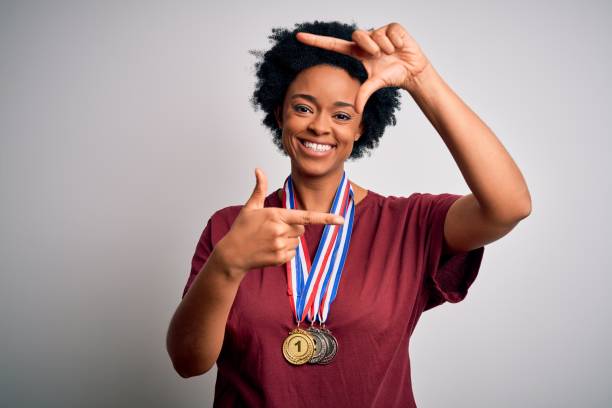Introduction:
The topic of body image, particularly gluteal proportions in African women, has gained widespread attention in recent years. In a world where beauty standards continuously evolve, the prominence of curvaceous figures, especially those with extreme gluteal proportions, has become a symbol of empowerment and aesthetic appeal, particularly among African and African diaspora communities. From historical depictions to modern-day influences, the ideal of unusual award n.13: extreme gluteal proportions in african woman has evolved significantly. This article explores the cultural, historical, and contemporary significance of extreme gluteal proportions, examining how this ideal has emerged within the African continent and the global African community.
The Historical Context of African Beauty Standards
African beauty ideals have long centred on the appreciation of fuller, curvier figures. These ideals have been a part of various African cultures for centuries, where larger body types, including pronounced gluteal features, were often associated with wealth, fertility, and overall health. The cultural symbolism of the gluteal area in many African communities was not simply about physical beauty but was linked to a deeper appreciation for women’s vitality and their role in society.
In many pre-colonial African societies, women’s bodies, particularly curvaceous figures, were seen as an embodiment of strength, nurturing, and the ability to provide for future generations. For instance, tribes such as the Himba in Namibia and the Mursi in Ethiopia have celebrated fuller body types, often portraying women with exaggerated curves in their art and traditional dress. These body types were regarded as desirable, not only for their beauty but also for their symbolic connection to fertility and prosperity.
However, with the arrival of colonialism and the introduction of Western beauty standards, many traditional African beauty ideals began to be overshadowed. The thin, “ideal” body type promoted by colonial forces started to influence perceptions, and many African women began to face social pressures to conform to these new ideals. Despite this shift, African beauty standards continued to evolve, and curvaceous bodies eventually regained popularity, albeit with new complexities in how they were viewed.
The Evolution of Gluteal Proportions in Africa
As time progressed, the concept of beauty in African cultures began to shift again, particularly with the influence of globalization and Western media. The glorification of slim, angular bodies, and specific body proportions started to lose its hold, especially as African women began to assert their beauty through the lens of cultural pride. This reassertion of body image reached a cultural resurgence in the late 20th and early 21st centuries, where curvier, more exaggerated gluteal proportions began to be celebrated both on the continent and among the African diaspora.
In modern-day Africa, particularly in countries like Nigeria, South Africa, and Kenya, the rise of hip-hop culture, the growing influence of African music genres like Afrobeats, and the global success of African entertainment have paved the way for a celebration of curvier bodies. These bodies are not only reflected in music videos but also celebrated through fashion, with clothing and trends that accentuate a woman’s natural curves. African women who embrace their full figures have reclaimed these once-marginalized body types, challenging the historical preference for slender, Westernized beauty.
The ideal of extreme gluteal proportions has gained prominence through the increasing visibility of women with fuller figures in entertainment, including celebrities like Beyoncé, Nicki Minaj, and African musicians such as Tiwa Savage. These figures, often celebrated for their natural curves, have set a global trend where body diversity, especially gluteal proportions, has found a space in mainstream media. This has led to a shift in both African and global beauty standards, as extreme gluteal proportions are increasingly associated with confidence, empowerment, and cultural pride.
The Role of the African Diaspora in Shaping Global Beauty Standards
The African diaspora, particularly in the United States, the Caribbean, and Europe, has played a significant role in reshaping global beauty standards by bringing African cultural ideals to the forefront. Over the years, Black women in the diaspora have become instrumental in redefining what is considered beautiful, with an emphasis on curves and fuller figures.
This cultural movement gained momentum in the late 20th century and was amplified by global superstars like Beyoncé and Kim Kardashian, both of whom possess prominent gluteal features. These celebrities, along with others in the African diaspora, have played a crucial role in challenging mainstream beauty standards and normalizing curvy body types. What was once seen as “unconventional” or “extreme” is now celebrated, particularly within the African-American and Afro-Caribbean communities.
The impact of African diaspora beauty ideals extends beyond entertainment and fashion, influencing beauty and wellness industries worldwide. The celebration of fuller, curvier figures has inspired many women around the globe to embrace their natural body types and take pride in their curves. This growing movement has been instrumental in shifting beauty standards, from the hyper-slim ideals of the past to a more inclusive and diverse understanding of beauty.
The Impact of Social Media on Gluteal Proportions
Social media platforms like Instagram, TikTok, and YouTube have further accelerated the trend of celebrating extreme gluteal proportions. African women, especially those with prominent gluteal features, have used these platforms to showcase their bodies and promote self-love and body positivity. The rise of influencers, fitness enthusiasts, and celebrities showcasing their curves has played a pivotal role in normalizing and celebrating fuller body types.
Hashtags like #CurvyAndProud, #ThickThighsSaveLives, and #BodyPositivity have contributed to a global movement that celebrates body diversity, with many women proudly sharing their fitness journeys, fashion styles, and personal experiences. These platforms have provided African women with a global stage to assert their beauty ideals and challenge long-standing stereotypes about body types, creating a space where the traditional African appreciation for fuller figures is now a celebrated part of global beauty.
However, this increased visibility also brings attention to the pressures that women face to maintain a certain body type. The rise of extreme gluteal proportions, both natural and enhanced, has led to discussions about the societal and psychological effects of body image. While social media empowers women to embrace their bodies, it can also contribute to unrealistic expectations, with the constant pressure to maintain a “perfect” body leading to concerns about body dysmorphia and unhealthy beauty standards.
The Role of Cosmetic Surgery and Enhancements
As the desire for extreme gluteal proportions has grown, so has the demand for cosmetic procedures aimed at enhancing gluteal features. Procedures such as the Brazilian Butt Lift (BBL) and butt implants have become increasingly popular, especially among women seeking to enhance their natural curves. These procedures, while offering a way to achieve the “ideal” body shape, also raise concerns about health risks and the cultural implications of altering one’s body.
In Africa, as well as in the African diaspora, cosmetic surgery is both a form of self-expression and a reflection of societal pressures to conform to beauty standards. Women who opt for surgical enhancements may do so for a variety of reasons, ranging from personal preference to the desire for greater societal acceptance. Despite the risks associated with such procedures, including complications and health hazards, the growing trend of cosmetic surgery highlights the ongoing cultural fixation on gluteal proportions.
While some view cosmetic surgery as empowering, others argue that it perpetuates harmful beauty standards and reinforces the notion that women must alter their bodies to meet societal expectations. In many African communities, where natural beauty has long been celebrated, there is a nuanced debate about the authenticity of surgically enhanced gluteal proportions versus the embrace of natural, fuller figures.
Empowerment vs. Objectification
The celebration of extreme gluteal proportions in African women raises important questions about empowerment versus objectification. On one hand, many women view their curvier bodies as symbols of strength, sensuality, and pride. Embracing natural curves, especially gluteal proportions, can be empowering for women who feel confident in their own skin and who defy traditional beauty norms.
On the other hand, the sexualization of extreme gluteal proportions in popular media, particularly in music videos and advertisements, can contribute to the objectification of African women. The fine line between celebrating curvy bodies and reducing women to mere objects of desire is a significant issue that requires ongoing conversation.
While the recognition of extreme gluteal proportions can be empowering, it is important to ensure that it does not reinforce the stereotype of African women as mere subjects of fascination or sexualization. Empowerment comes from the ability to control one’s own image and narrative, and African women should have the freedom to celebrate their bodies without the fear of being objectified.
The Future of Extreme Gluteal Proportions in African Beauty
As beauty standards continue to evolve, it is likely that unusual award n.13: extreme gluteal proportions in african woman will remain a significant aspect of African beauty ideals. With growing recognition and celebration of body diversity, the future may see even more emphasis on embracing natural curves, and the idealization of fuller bodies will continue to shape global beauty trends.
This shift will likely be accompanied by a broader acceptance of diverse body types, where beauty is defined by individuality rather than conformity to one particular standard. African beauty, particularly through the lens of extreme gluteal proportions, will continue to influence global perceptions of femininity, strength, and beauty in the years to come.
Conclusion
The ideal of unusual award n.13: extreme gluteal proportions in african woman has evolved from a cultural symbol of fertility and strength to a modern-day standard of beauty, influenced by both African and global trends. Whether celebrated through natural features or enhanced through surgery, this body type continues to reflect the changing landscape of beauty, self-expression, and empowerment. As beauty standards shift towards a more inclusive understanding of body diversity, extreme gluteal proportions will remain a significant and evolving aspect of African beauty ideals, influencing global culture for years to come.
Also Read: troy moran hart high school principal






